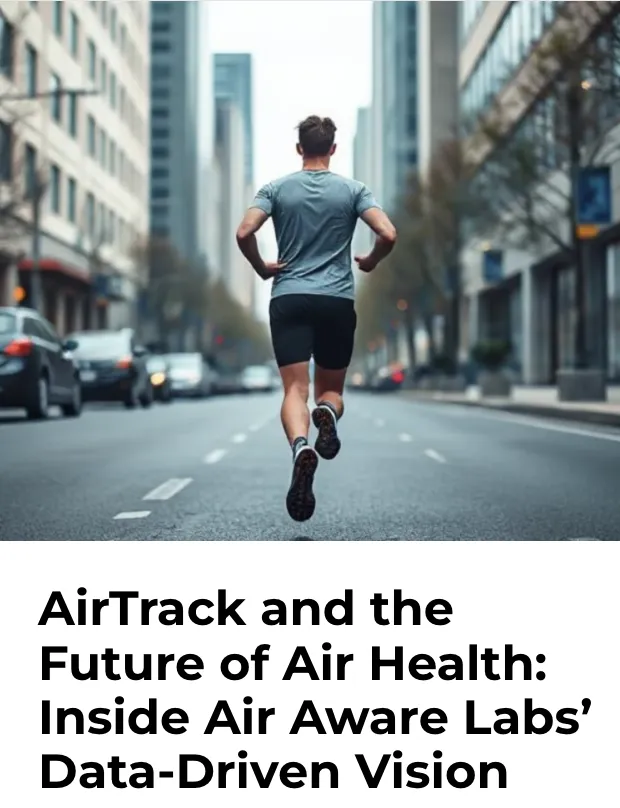Air Pollution and the Olympic and Paralympic Games

Today marks the opening ceremony of the 2024 Summer Olympic and Paralympic Games in Paris. Around 14,250 Olympic athletes and 8,000 Paralympic athletes will be in Paris for this quadrennial event. You might have heard about the efforts to clean the Seine River, but not as much attention is being paid to efforts to clean air pollution. Paris had promised to cut the carbon footprint of the Games in half, so there are many sustainable practices in place for the Games, but there are existing issues in France that will cause issues for the air quality.
Athletes and Air Pollution
Air pollution is very important to the success of these Olympic and Paralympic athletes. Athletes inhale between 4 to 10 times more air pollutants as compared to someone at rest, and they take in 20 times more air than a resting person. Inhaling higher levels of air pollution can lead to asthma attacks, dizzy spells, and prevent athletes from being able to reach their level of peak performance. For example, exposure to elevated concentrations of particulate matter (PM2.5 and PM10) prior to a race increases race day running times. In an event where fractions of a second can delineate between gold and silver, these impacts are significant. During the 2020 Games, the difference between gold and silver for the Men's 5000m was not even half a second, at 460 milliseconds. There is some evidence that athletes can acclimate to pollution in a similar way to altitude. For example, athletes from more polluted areas may be able to acclimate to certain pollutants, such as ozone, giving them a slight advantage in a polluted Olympic or Paralympic venue. Ozone pollution can exacerbate asthma and other respiratory problems, which makes it more difficult to breathe normally.
Parisian Problems
The French company Respire released a map that shows air pollution levels of nitrogen dioxide (NO2), PM2.5, and PM10 at every Olympic site. It uses the recommendations from the World Health Organisation (WHO) and the standards from the European Union (EU) to show good, moderate, and poor levels of air pollution at these Olympic venues in 2023. When the data was collected, out of the 122 Olympic venues, 101 had poor levels of NO2, 27 had poor levels of PM10, and 76 had poor levels of PM2.5. Roughly 95% of the sports venues are above the recommendations for air quality set by the WHO. Part of the reason why so many venues have poor air quality is because one third of the stadiums in Paris are near the Boulevard Périphérique, a busy ring road which loops around Paris. The majority of these nearby venues often suffer from worse air pollution. Efforts are being taken to help the Olympians, such as five outdoor air purifiers outside of Olympic Village created by Aréophile. These are the first air purifiers to be set up for the Olympics, but it is not the first time measures have been used to attempt to protect athletes.
Past Efforts
Back during the London Summer Olympics and Paralympics of 2012, there were concerns about the build up of high ambient ozone levels, but fortunately fresh westerly winds cleared much of it away just before the Opening Ceremony. There were further concerns towards the end of the Olympics, but pollution concentrations at the time of the marathon were low, as the race took place in the morning, avoiding the afternoon peak in ozone. A much bigger problem was envisaged prior to the Beijing 2008 Summer Olympics and Paralympics, and China took several significant steps to have clear skies. Every-other-day driving restrictions led air pollution to fall by 19%. Many factories were relocated or temporarily shut down to minimise the emissions during an important event. Unfortunately, these temporary measures meant that after a year, the better air quality efforts had been undone. Despite the reverse progress, having increased public awareness in China led to increased governmental action. The 2013 air pollution action plan has lowered air pollution, and it was not until 2023 that Beijing saw a rise in PM2.5 pollution.
Looking Towards the Future
While exercising in polluted air is unhealthy, it does not disregard the fact that exercise can help mitigate some of the adverse symptoms through its anti-inflammatory and immune-enhancing properties. Nevertheless, there are several measures that would be beneficial to incorporate in the future. Sports facilities should no longer be built next to sources of air pollution such as major roads, but many already exist. These existing facilities need to monitor air quality so that they can be temporarily shut down during peaks in pollution, or at the very least allow athletes and their trainers to create schedules and organise events around the air quality at a specific time. For example, during the Paris Olympics and Paralympics, the marathon will be run at night in an attempt to avoid some pollution from road traffic as well as from the heat. Hosting the Games has given Paris an external cause to promote change. France now has the opportunity to test public transport and carpooling on the Boulevard Périphérique in an attempt to keep lower emissions of air pollution. Having an increasing number of electric vehicles will also help reduce exhaust emissions, and lighter weight cars will reduce the wear on the tarmac. Yesterday Mayor Hidalgo launched an international initiative ‘It’s in the Air’ to coincide with the start of the Games, which will promote policies that improve air quality such as clean air zones.
Air Aware Labs
Most athletes cannot control the air pollution they are exposed to at an Olympic or Paralympic venue, but with Air Aware Labs they can track their exposure to different pollutants during training. Having access to personalised, location-specific technology can help athletes of every skill level ensure they know what they are breathing in. Whether you are training for the Olympic marathon, Paralympic swimming, or simply taking your dog on a walk, you can use Air Aware Labs AirTrack tool to keep track of your routes with minimal exposure to air pollutants.
Written by MJ Brewer


.svg)











